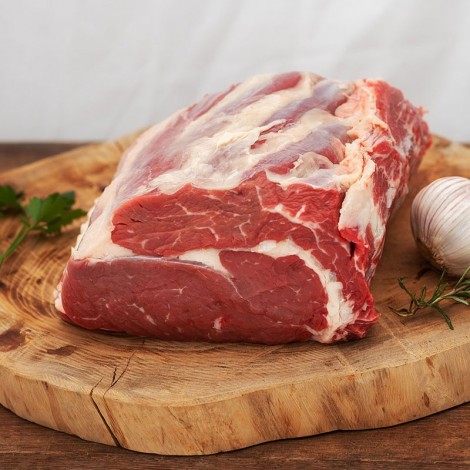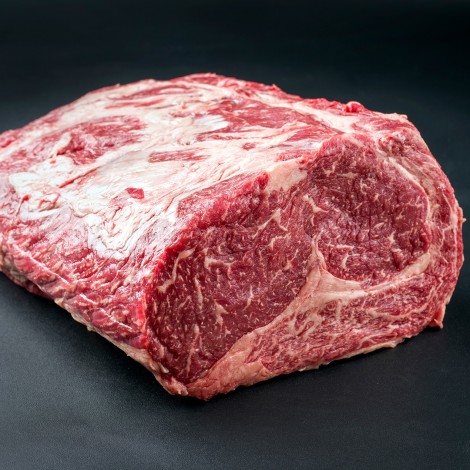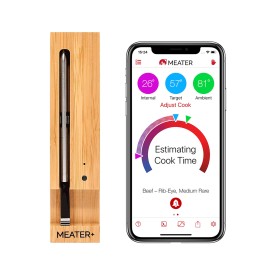- Origin: Argentina
- Quality assurance: Argentine Quality Beef
Filter By
Ribeye for roast
- Origin: Brazil
- Origin: Japan
- Quality assurance: Wagyu A5 BMS 8
- Origin: USA
- Quality assurance: USDA CHOICE
What part of the carcass is it?
The ribeye is cut from the front quarter of the beef. It is boneless meat separated by:
- from the front at the cut line of the chuckroll, usually between the sixth and seventh thoracic vertebrae and the adjacent ribs,
- posteriorly, usually between the last and penultimate thoracic vertebrae,
- from below along the line of separation of the brisket (at a distance of 75 mm from the eye of the longissimus dorsi).
Depending on the commercial specification, the method of cutting the ribeye may vary. It can be cut along the 4th, 5th, 6th, 7th, 8th or 9th rib.
Marked marble
Unlike striploin or tenderloin, beef ribeye is a beautifully overgrown inner fat. Fat is in demand here. It is in it that the famous flavor is enchanted.
A characteristic fat-collagen marbling, and in Rib Eye, fatty threads resembling a pupil, melt during processing, penetrating the structure of the meat. As a result, the final dish is juicy and delicate.
Not only for steaks
Very good if your first association is steaks. But this type of beef will also work well roasted whole or stir-fried. It's up to you whether it goes to the oven, pan or grill. In each version, it will gain the recognition of those you treat it to. Beef ribeye will look great during an elegant dinner and outdoor BBQ.
In addition to the form of application, you also have a huge scope for additions. Good quality beef, which is the only one we offer, will speak for itself. You don't have to spice it up too much. A piece of meat with lettuce and sauce will create a complete and most importantly delicious dish.







